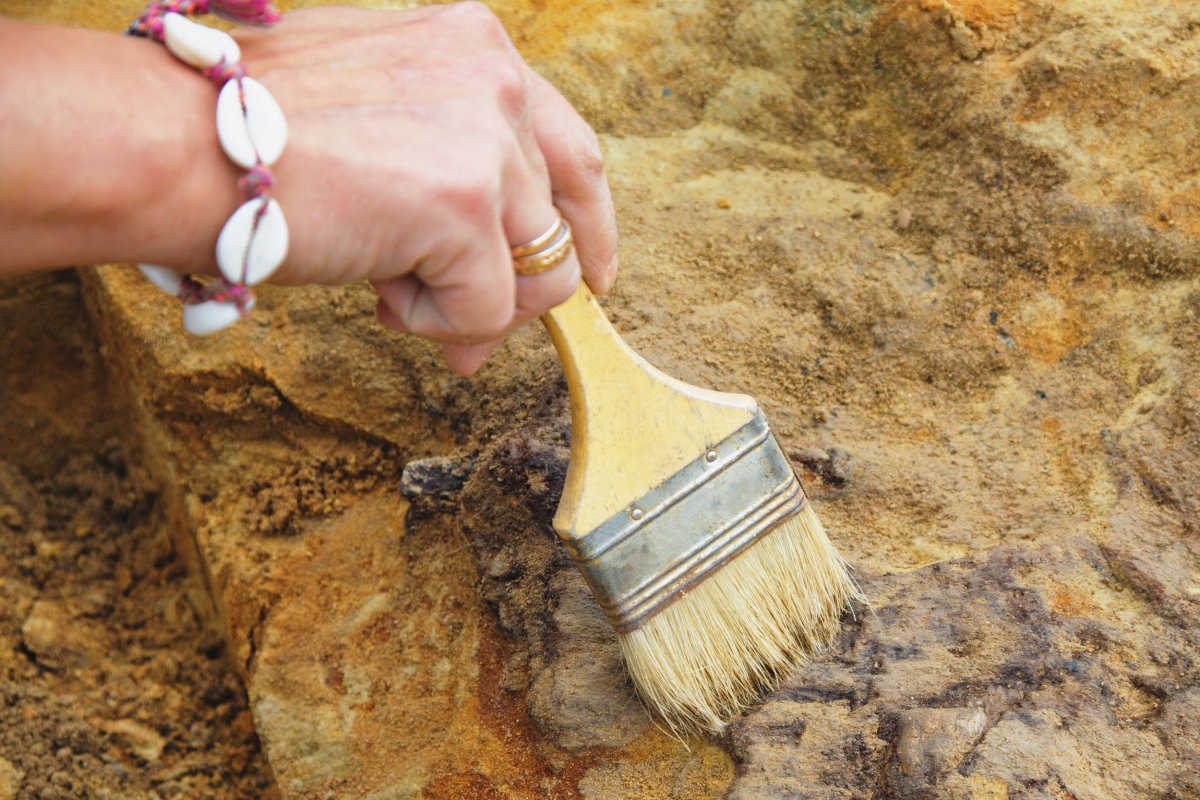An international team of archaeologists and students has been excavating an enigmatic site that could be the location of a long-lost medieval palace.
The site, known as Mantle Walls, lies in a field outside the village of Ancrum, Scotland, close to the English border. Previous work here has identified a "substantial" medieval building, but its purpose has yet to be determined.
"We are now trying to determine exactly what the building was," Ian Hill with Heritage and Archaeological Research Practice (HARP) told the BBC.
Over the past two weeks, HARP, alongside the Ancrum and District Heritage Society (ADHS), and local residents, as well as students from the United States, Australia, Canada and the Netherlands, have been taking part in a dig at the site.
The aim of the excavation is to shed light on the medieval structure and learn more about its identity.
"All we know is high status, medieval, and big—that's all we know," Sheila Munro of the ADHS told ITV. "We know something really significant is here and every dig we do, we get a little bit more information."
The Mantle Walls site has captivated the interest of local residents for decades. It has long been suspected that it is the location of a grand residence belonging to one of the medieval bishops of Glasgow.

Historical documents show that this bishop, William de Bondington, had a summer residence at Ancrum from the 1230s until his death in 1258.
There is evidence to suggest that Scottish royalty were entertained at the bishop's palace. In fact, Alexander II, who ruled Scotland for a period in the 13th century, signed at least three charters there in 1236.
Over the centuries, the structure that once stood at the Mantle Walls gradually disappeared. It is thought that many stones from the collapsed walls of the bundling were used to help build the neighboring village in the 17th and 18th centuries.
But hints of the structure's past, such as medieval pottery, regularly appeared at times when the field was plowed.
In the 1990s, a local resident, Alistair Munro, and a local historian John Rogerson, began investigating the site. This work led to other historians and archaeologists taking an interest in Mantle Walls. Further research has been conducted at the site over the past decade or so.
Researchers have made several finds at the site, including medieval ironwork and substantial stone walls, indicating that Mantle Walls was once the residence of the Bishop of Glasgow.
But conclusive evidence has proved to be elusive, in part because so much of the stone has been removed, but also because metal-detectorists have been visiting the field for decades and removing artifacts.
"While a substantial medieval building has already been identified we don't know the extent of the site or if there were more buildings," Hill told the BBC.
While definitive proof of the structure's identity has yet to be uncovered, the archaeological work that has taken place at the site so far has resulted in Mantle Walls becoming a scheduled monument of national importance.
"Hopefully over the coming weeks, we'll be able to get closer to being able to say for definite what was here. We have archaeologists and students from all over the world helping us, which shows how much interest there is in getting the answers we're looking for," Munro told the BBC.
Uncommon Knowledge
Newsweek is committed to challenging conventional wisdom and finding connections in the search for common ground.
Newsweek is committed to challenging conventional wisdom and finding connections in the search for common ground.
About the writer
Aristos is a Newsweek science reporter with the London, U.K., bureau. He reports on science and health topics, including; animal, ... Read more
To read how Newsweek uses AI as a newsroom tool, Click here.








